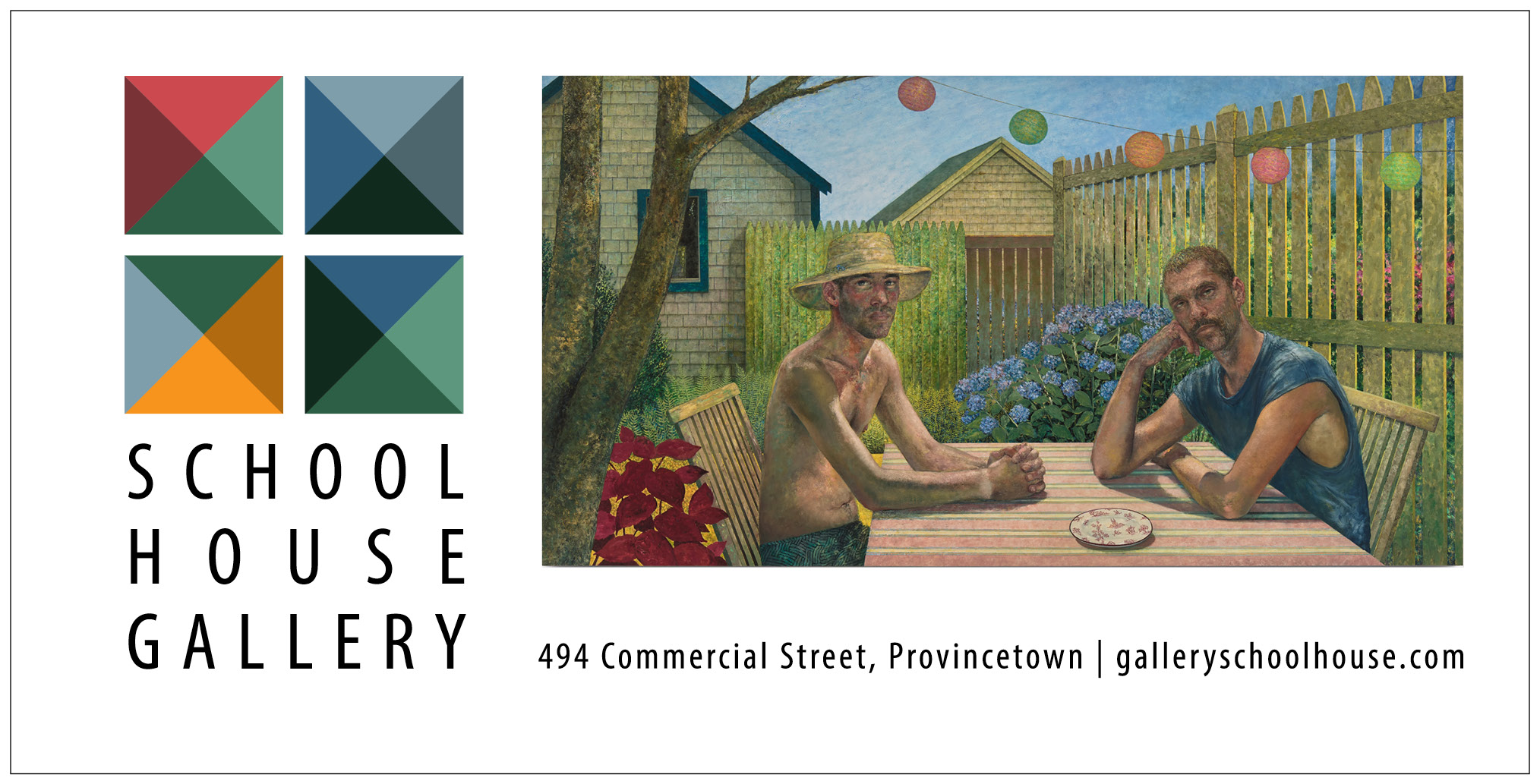In David Gonville’s painting July at Davis Farm, the outline of a gable-roofed house, sketched onto a landscape of yellow, looks as though it might float away. Not only that — it seems to be separating from itself, breaking into fragments as if affected by some disorienting trick of the light. In the foreground, barely visible, is what appears to be a tuft of grass. The piece is disarranged; the viewer seems at once to stand in the scene and to see it from an impassable distance.
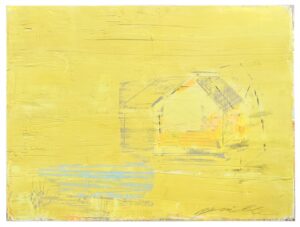
The painting is part of Gonville’s “Farm Coast” series, inspired by a 200-acre tract of coastal farm and forest in Rehoboth — conservation land where he works building trails and planting native plants, including a wildflower field to benefit birds and bees, and where he makes his art.
His new show, opening at Soderbergh Gallery in Wellfleet on Sept. 14, includes 38 works that he painted in the last year, which are inspired by the place and by his enduring love of the ocean.
“When I first started painting,” says Gonville, who grew up on Narragansett Bay in Rhode Island, “everything that I did was ocean-related.
“I’ve been surfing since I was 10,” he says. “It’s a comfortable place to be.” His paintings of the water are often up-close and intimate. In Duck Dive, light glints off the surface; the viewer wants to squint. To paint the water is to feel a sense of clarity, says Gonville: “It’s hard to describe. It’s the feeling you get when you’re in the ocean or in a meadow or in a field with the ocean nearby.”
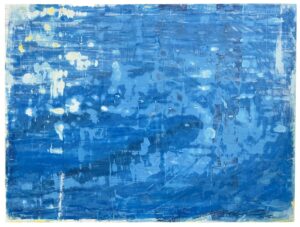
Property caretaking in Rehoboth has changed his work to include land and even human figures. His feeling when he starts a piece, whether of land or water, is similar: “It’s musical,” he says. “It’s like improv.”
His process is like that of a trained musician, he says, “but when they’re hanging out, just having fun with their friends. They’re jamming.” It’s a sort of flow state. “Then after that happens, they’re kind of like, ‘Wow, I can’t believe that jam we just did. That was such a cool feeling. Oh, we should have recorded that.’ But then, no one recorded it.
“That’s what happens with my good paintings,” he says. The difference, of course, is that the ephemeral episode is recorded in a finished work. “I’ve captured that moment.”
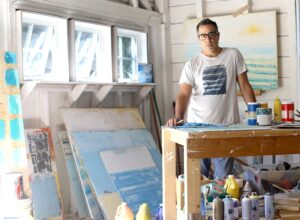
Gonville, who lives mainly in Barrington, R.I., comes from a family of tradespeople, he says. “I’m a third-generation flooring contractor.” He used his skills in woodworking to fix up one of the buildings on the Rehoboth property — one of three built there in the 1700s — for his artist’s studio. “It was in really rough shape,” he says. “It didn’t have heat for a while. It got pretty cold.”
He’ll sometimes work on 10 paintings at a time. Often, he works on the floor. His pieces can be very large, all on wood panel. He sources his materials from the scraps tradespeople might otherwise throw out.
“I’ll take extra two-by-fours and plane them down and make my own frames,” he says. But he doesn’t just scavenge wood — he’ll also use discarded paint and plaster.
He sometimes makes encaustics, applying pigmented plaster to a wood panel, removing layers and adding layers on top until he’s satisfied. The resulting texture is shiny but not glitzy — it looks almost liquid. Two pieces, named Popsicle and Creamsicle, seem to melt.
Some paintings are made from the extra pieces he’s cut from other paintings. “If I don’t like one,” he says, “I’ll cut it up and rearrange it.” Sunnyside is one such piece: five feet wide and nearly five feet high, it’s like a giant puzzle. Planks of wood in yellow, blue, and white complete the abstract picture.
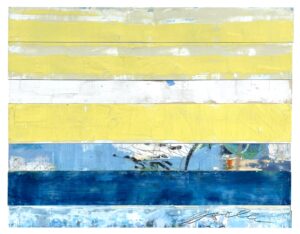
As a kid, Gonville was into skateboarding. He designed T-shirts using silk-screen printing and built wooden ramps. “I learned to work with my hands,” he says. “That was really the beginning of me deciding I was interested in art.” Later, he went to UMass Dartmouth for graphic design.
His works reflect a designer’s sensibility. They’re more about form and color than narratives. The Future’s So Bright seems impossibly obvious: it’s the yellow shape of a person from the shoulders up. But maybe it’s a buoy — it’s unsettlingly rounded and sort of slumped. It has the air of being scraped together.
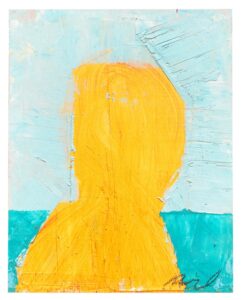
In contrast, Palmer River seems carefully composed — each stroke of blue river casual but necessary, like a jam session done right.
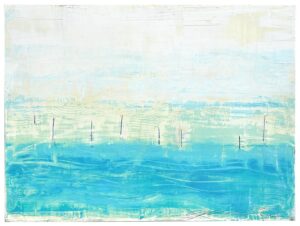
Catch This
The event: David Gonville’s solo show of paintings
The time: Sept. 14-29; opening reception Saturday, Sept. 14, 3-7 p.m.
The place: Jeff Soderbergh Gallery, 11B West Main St., Wellfleet
The cost: Free
